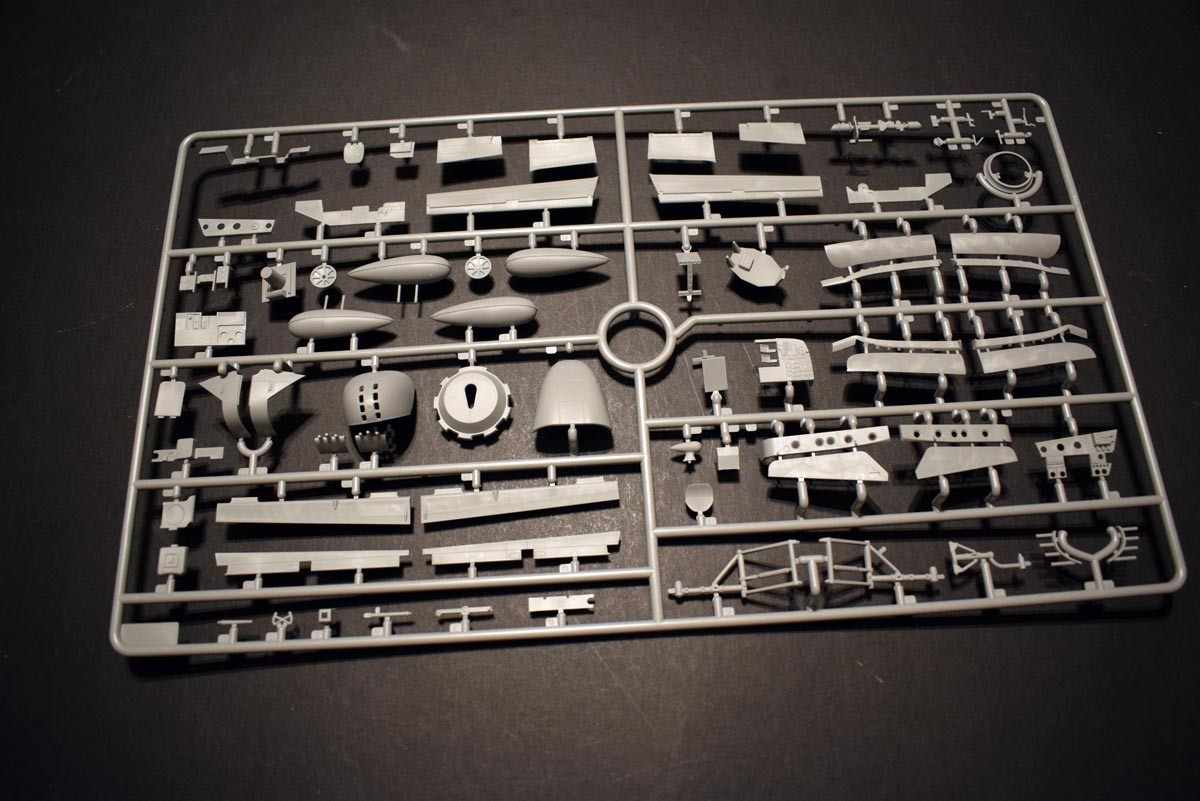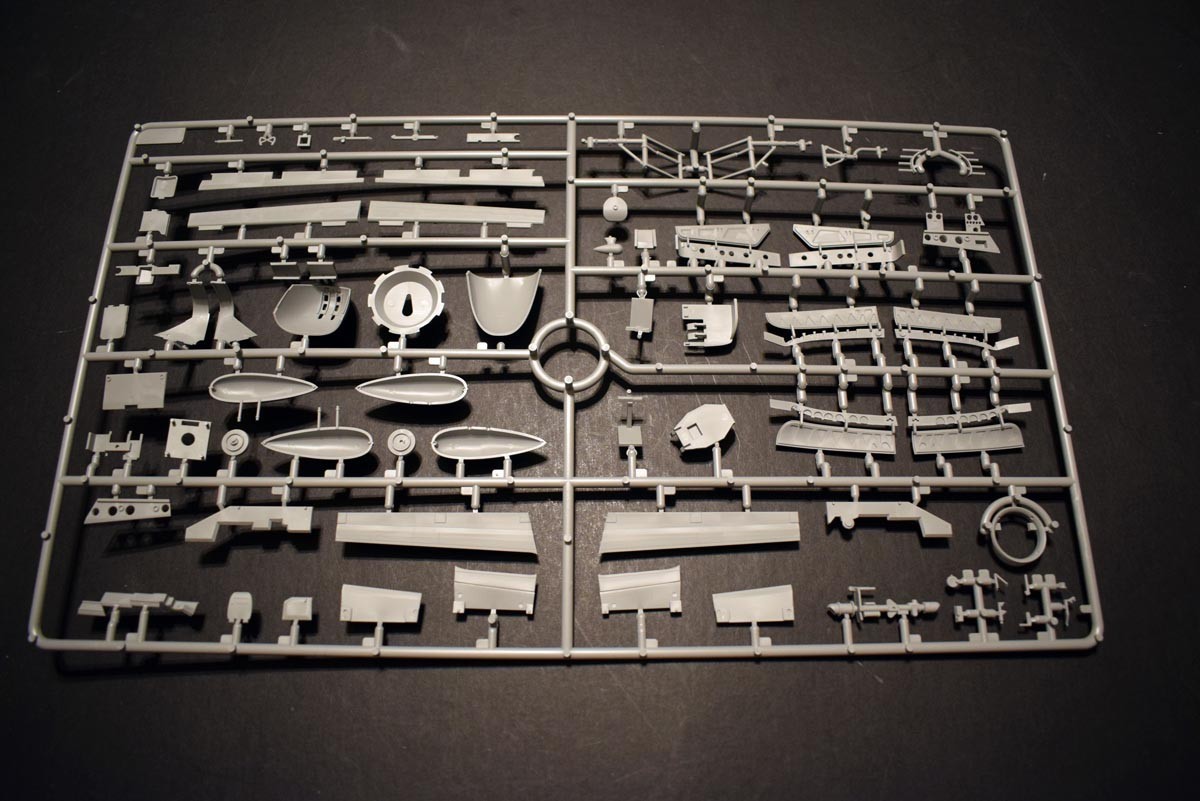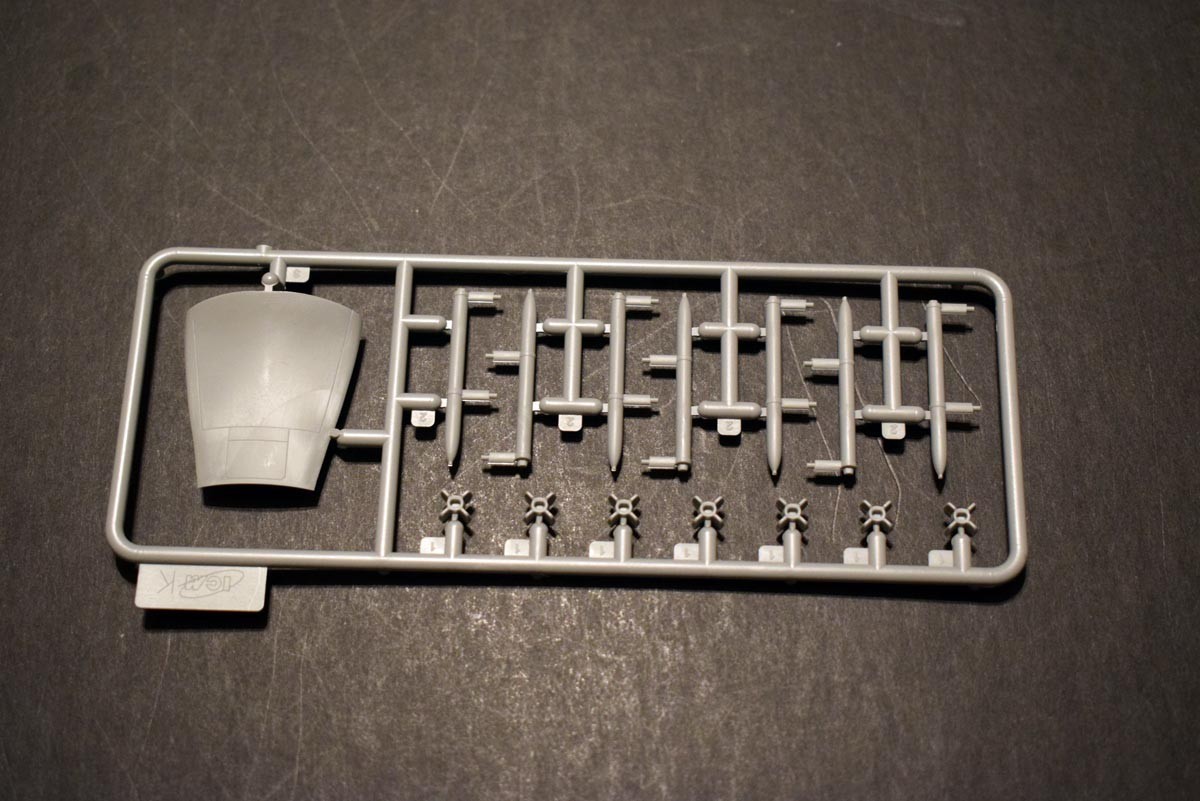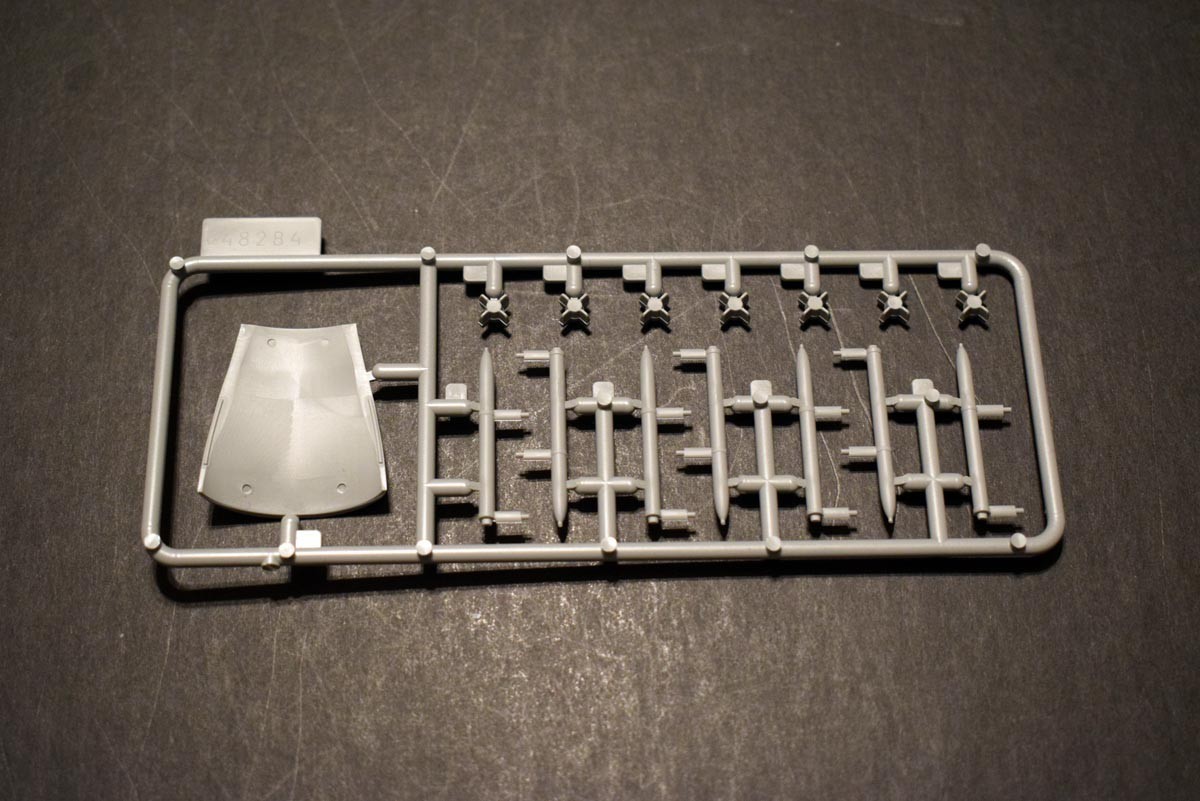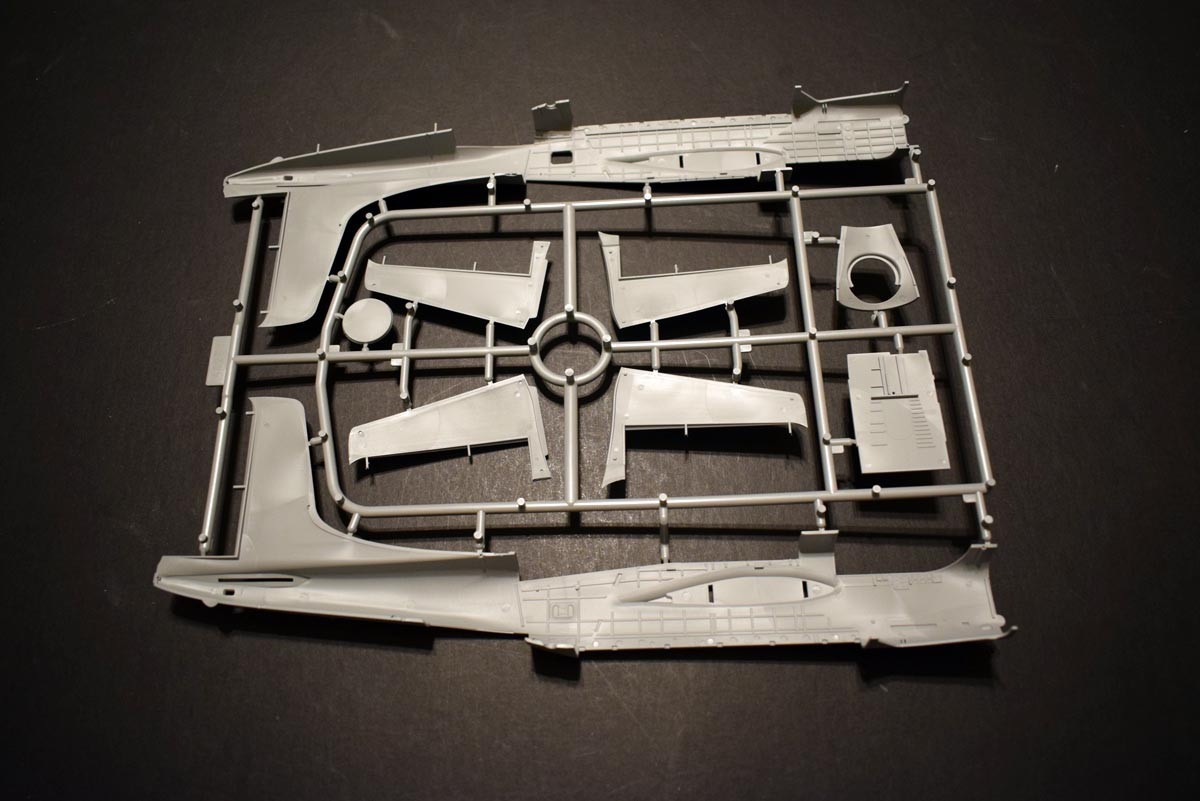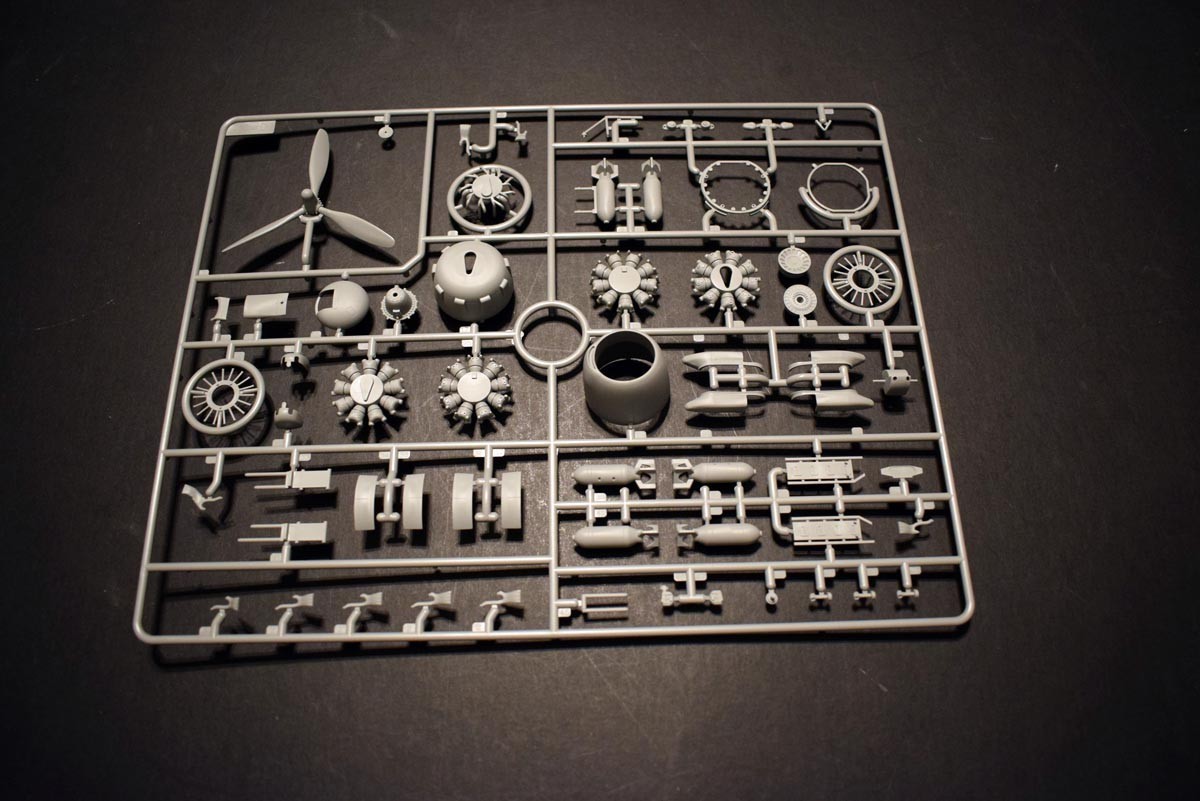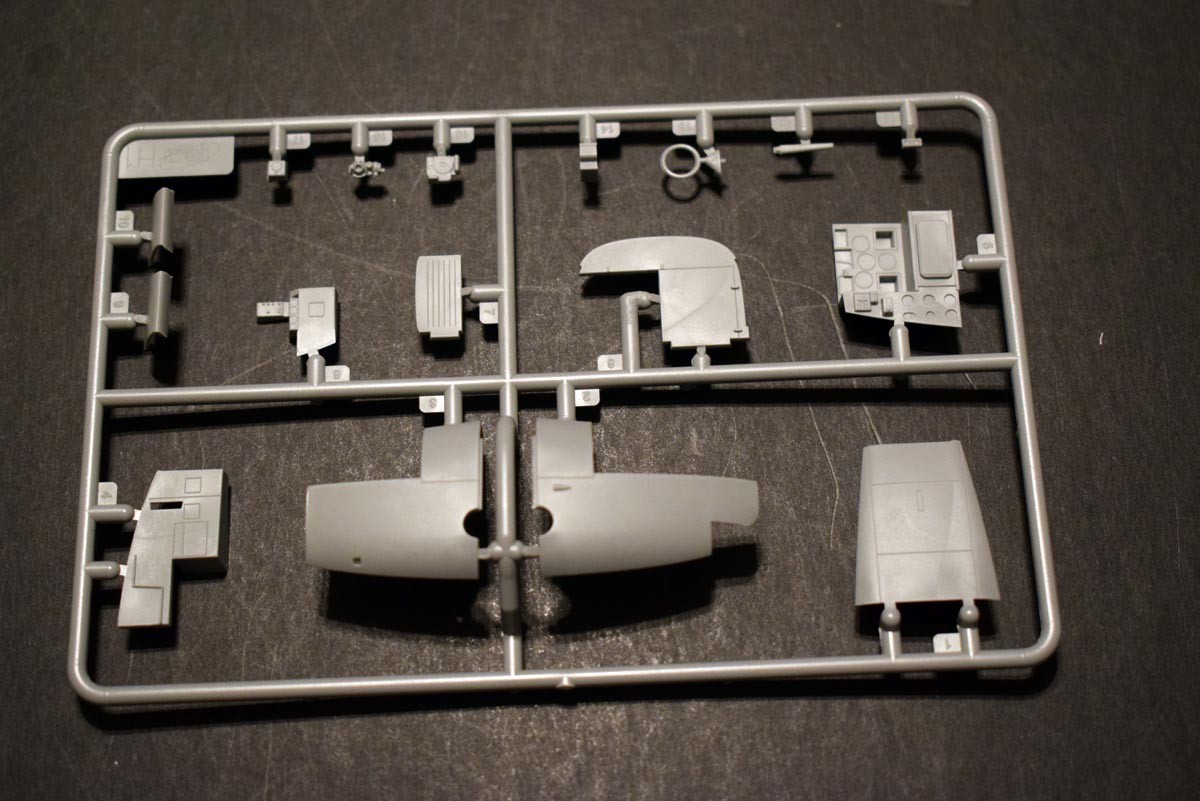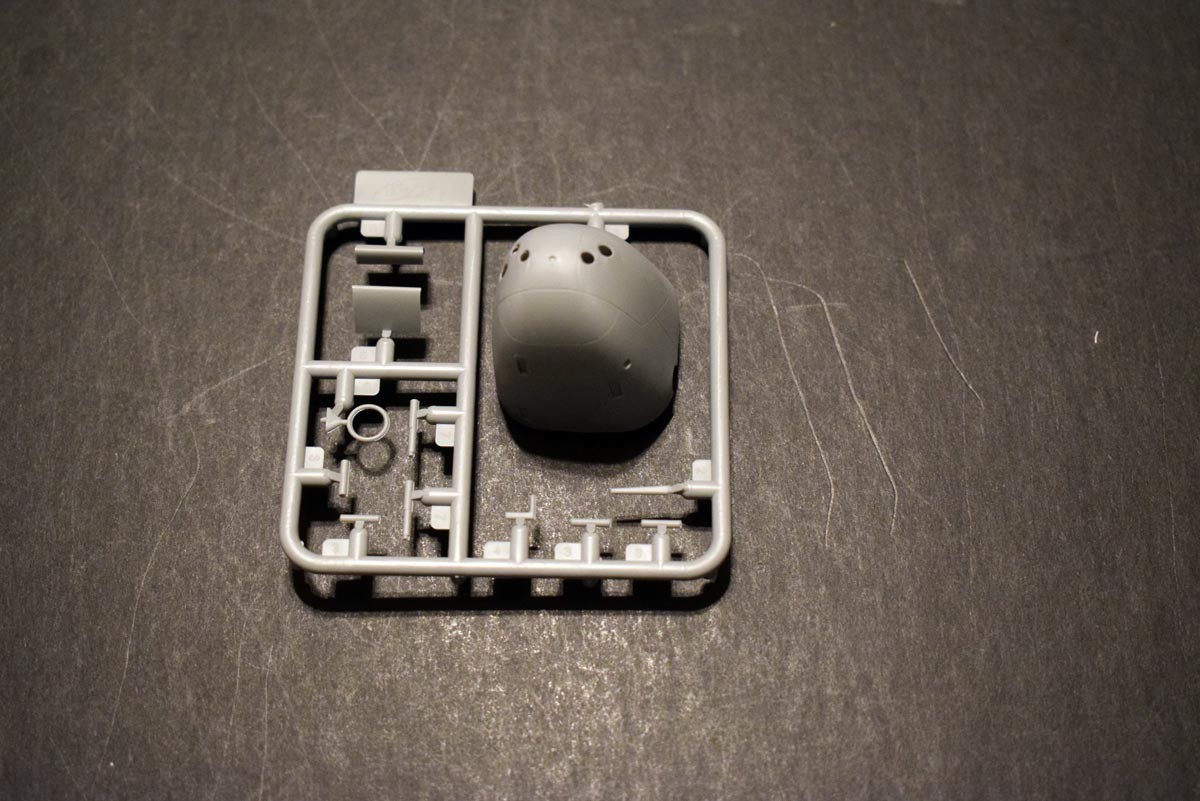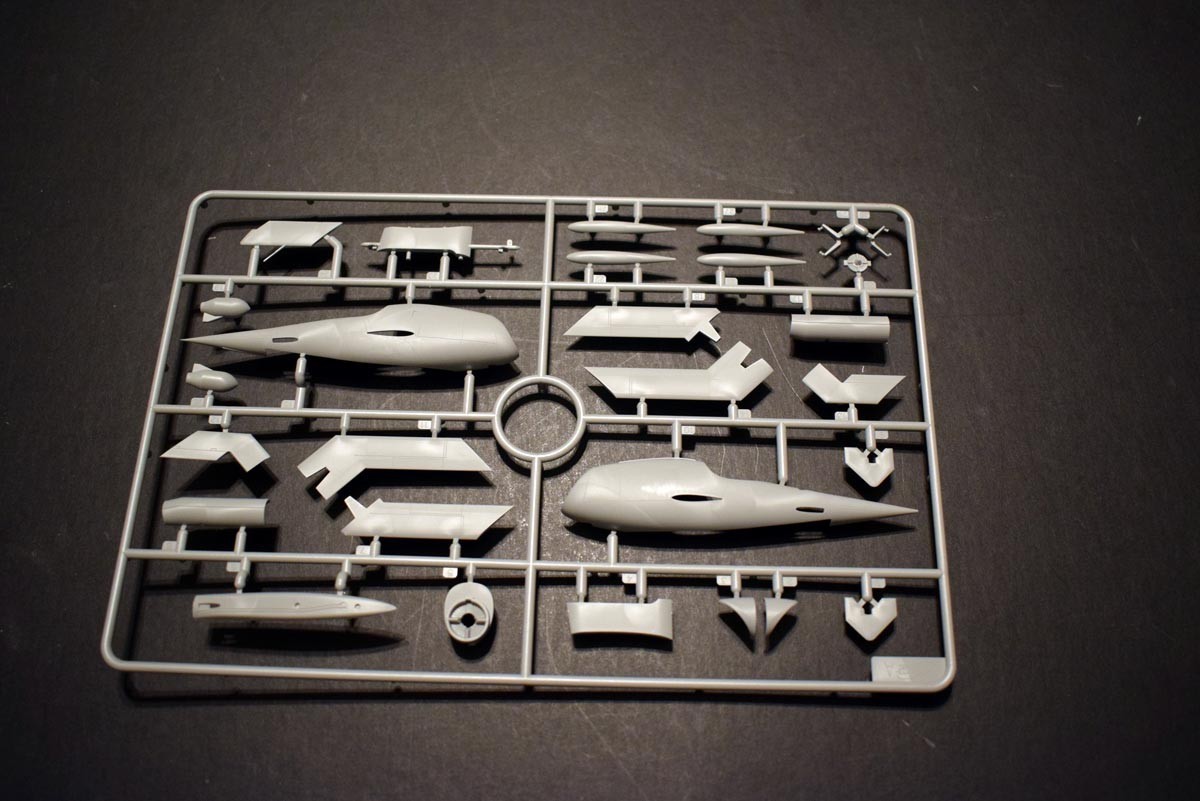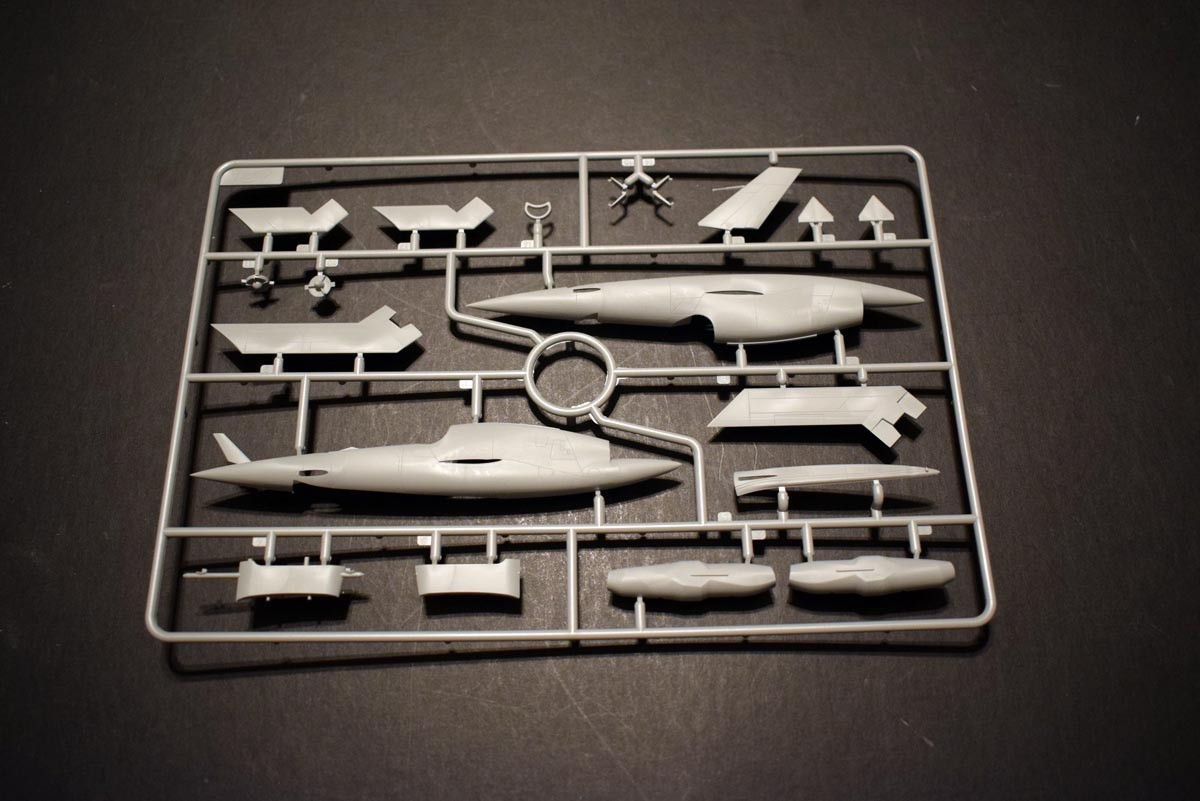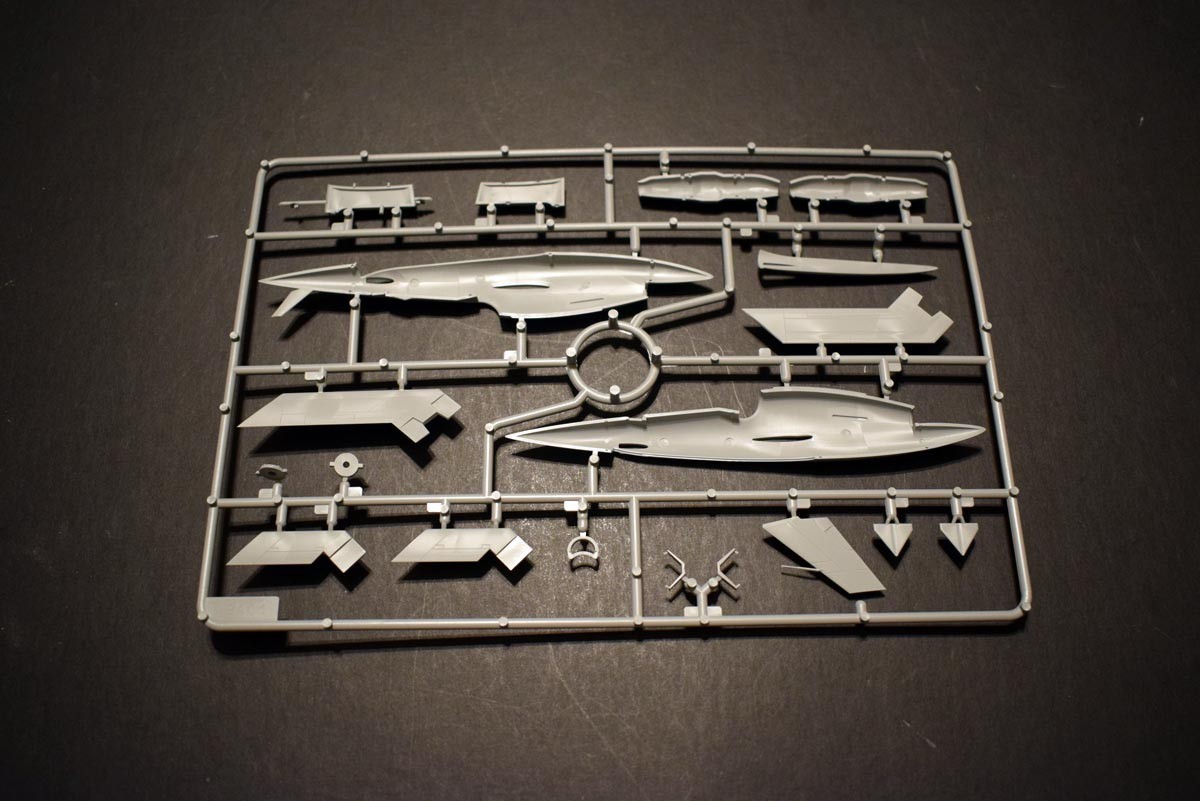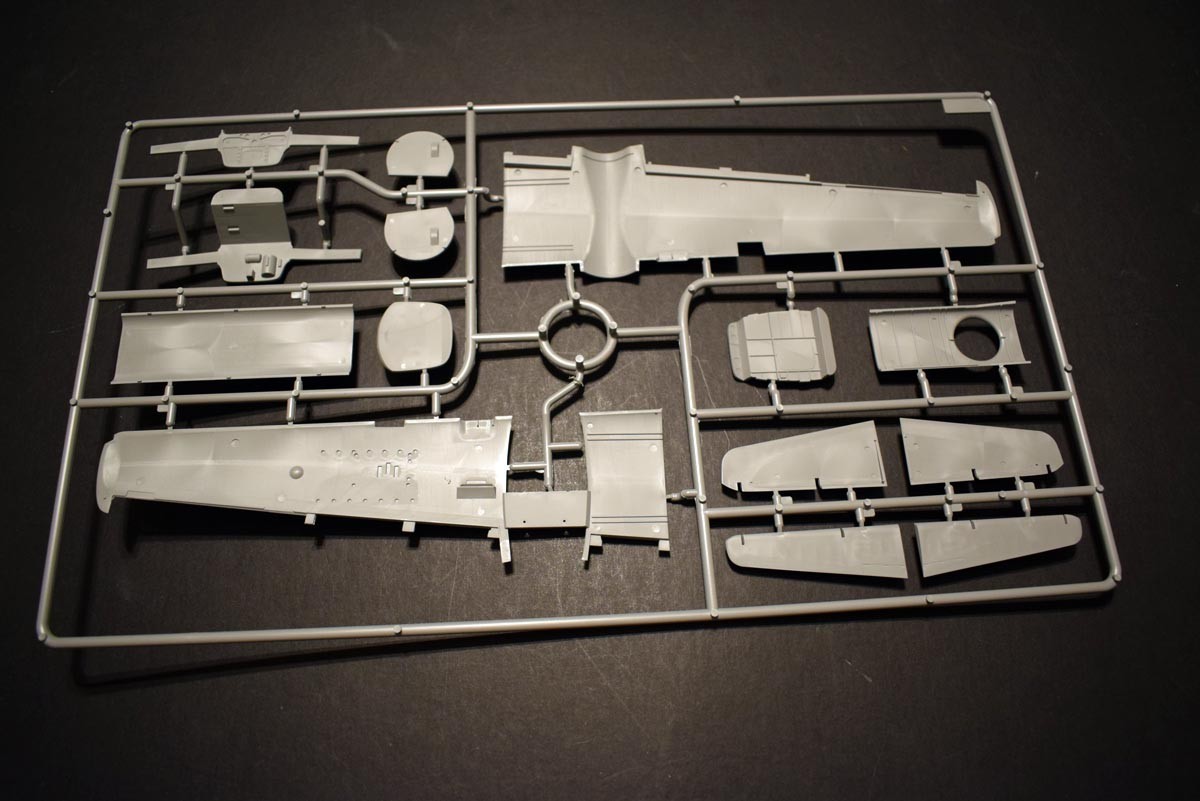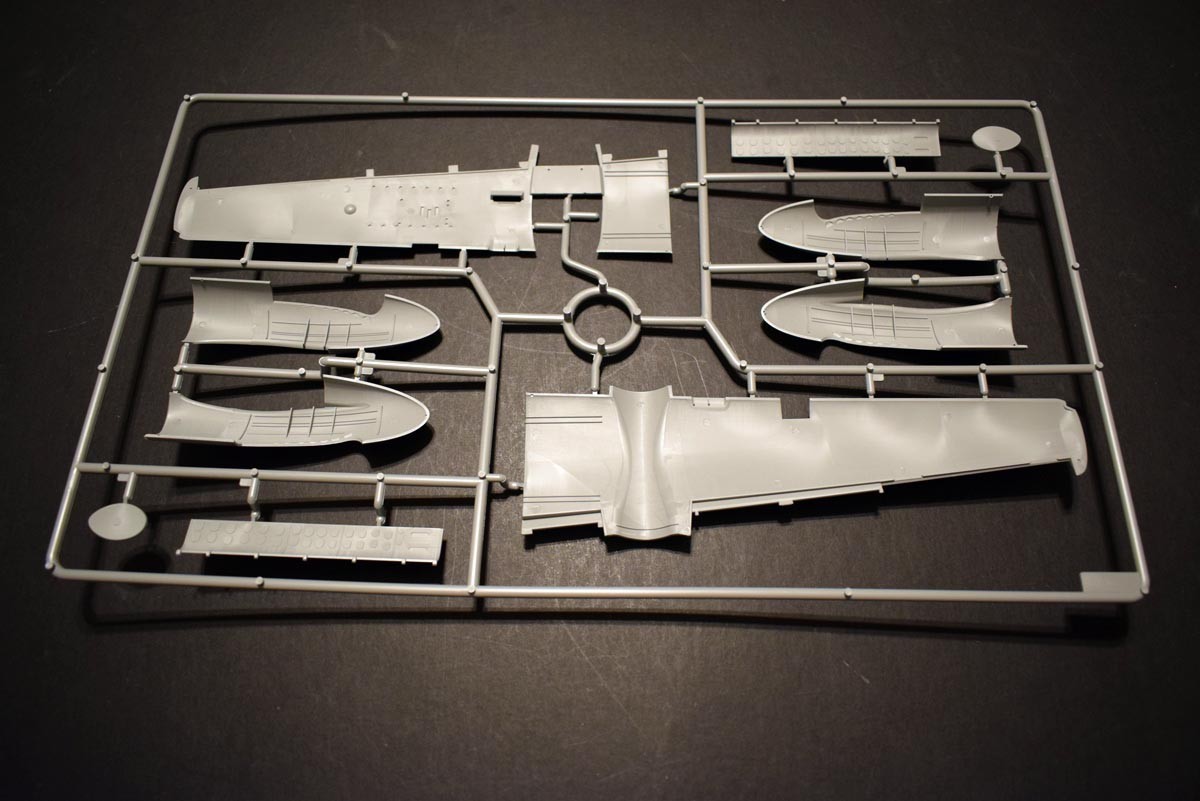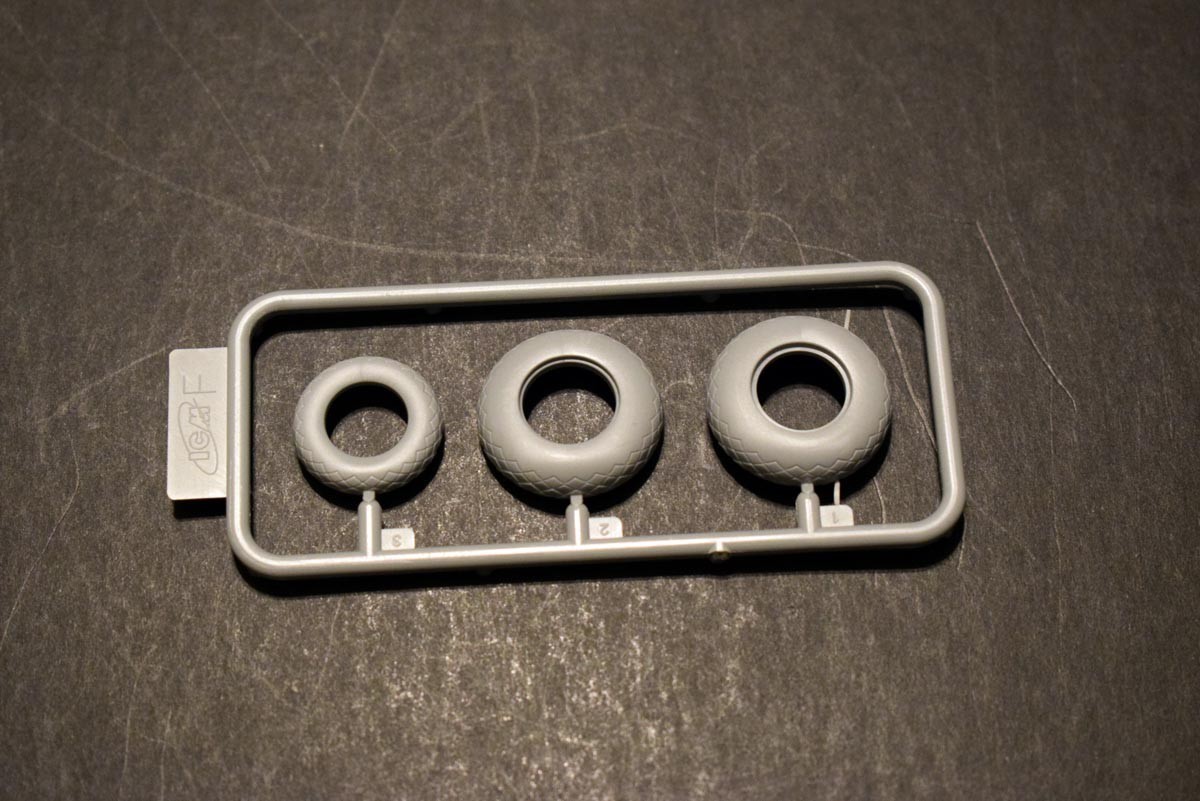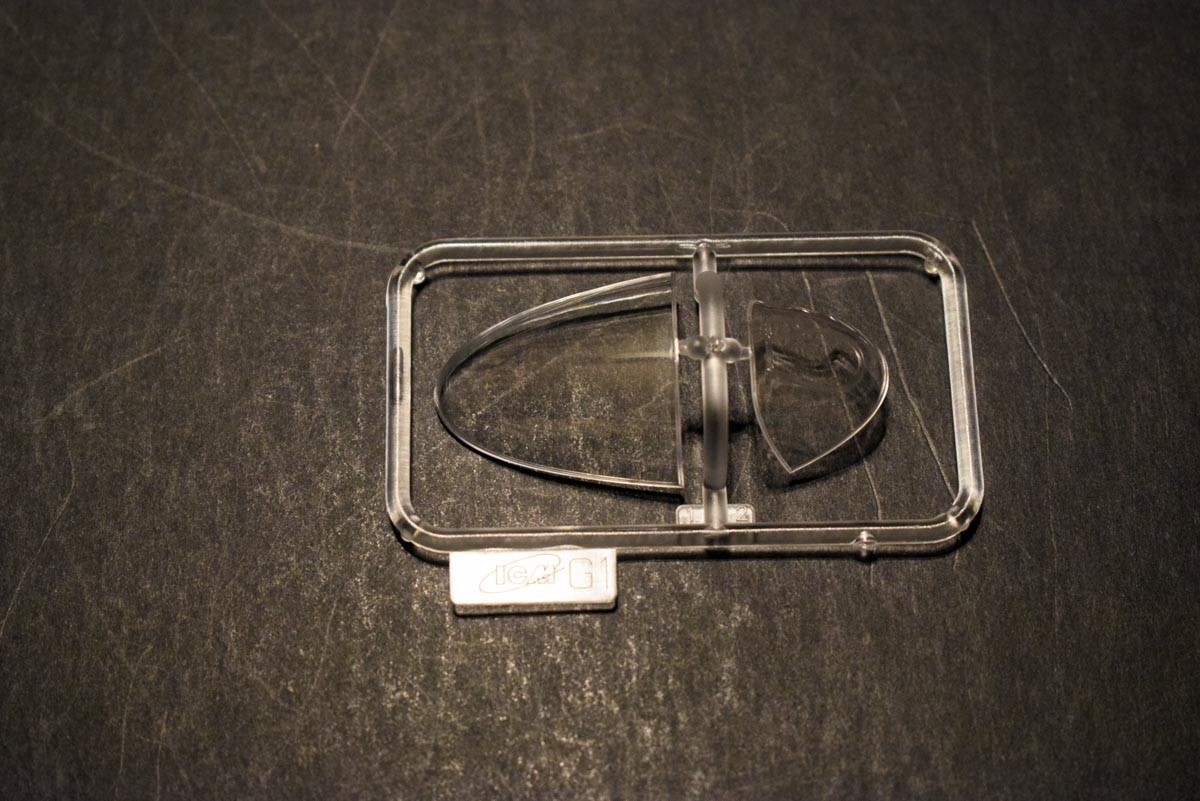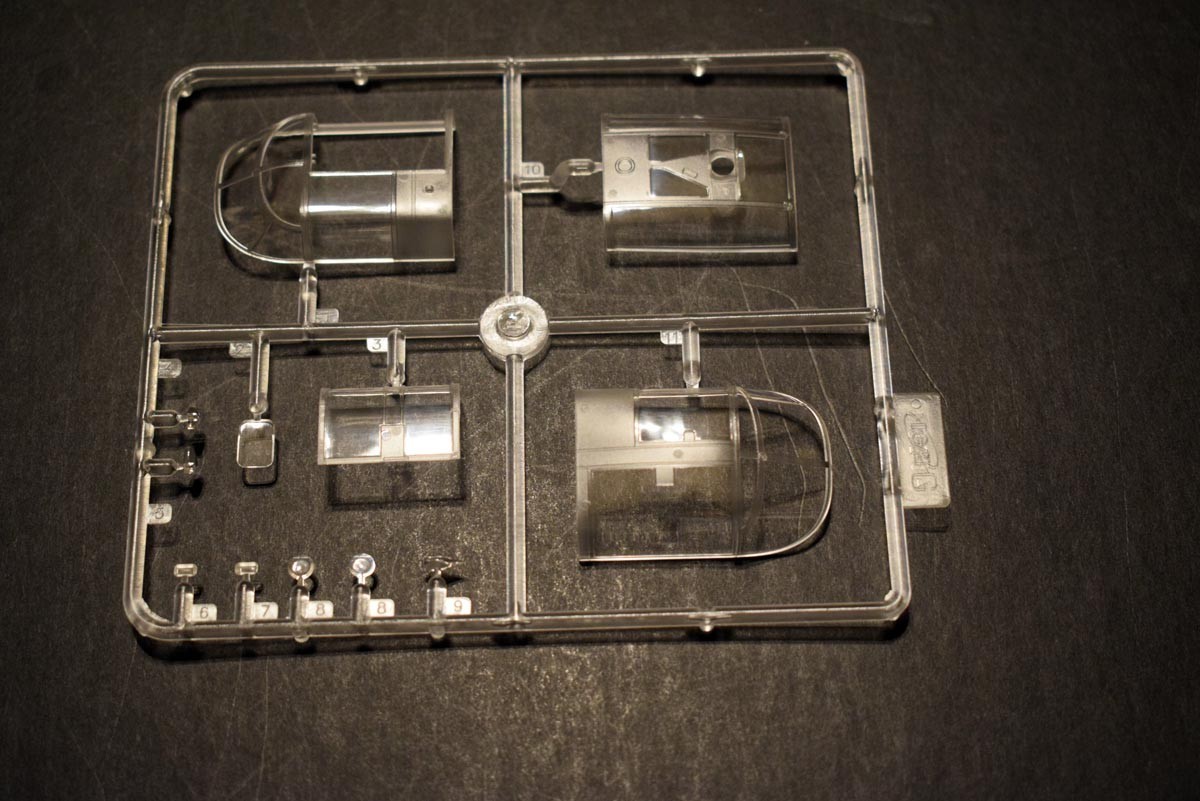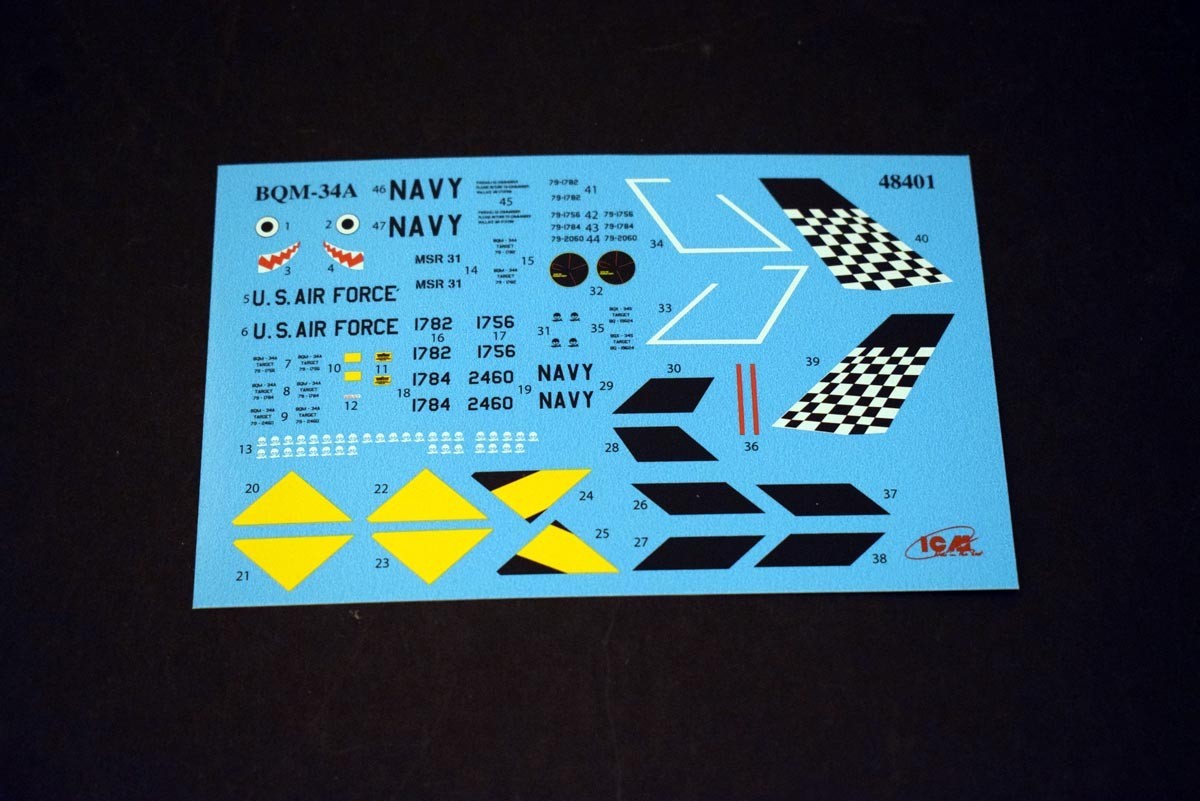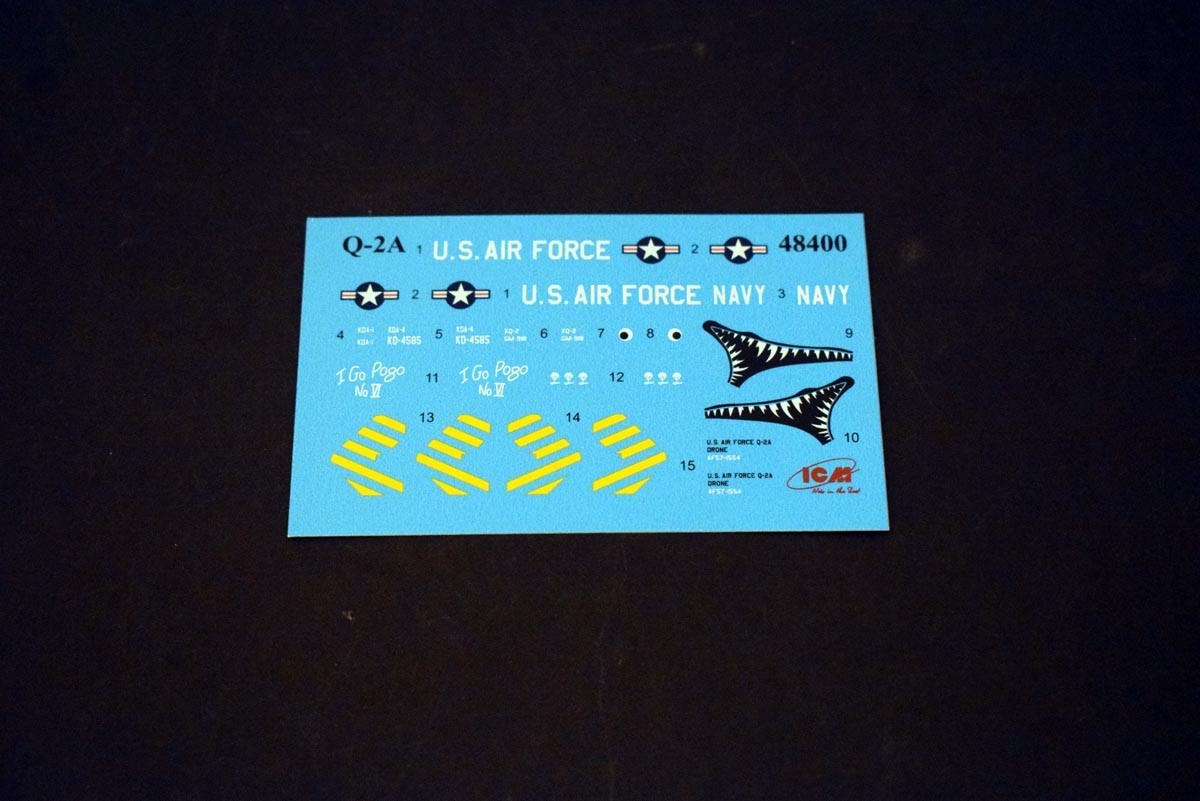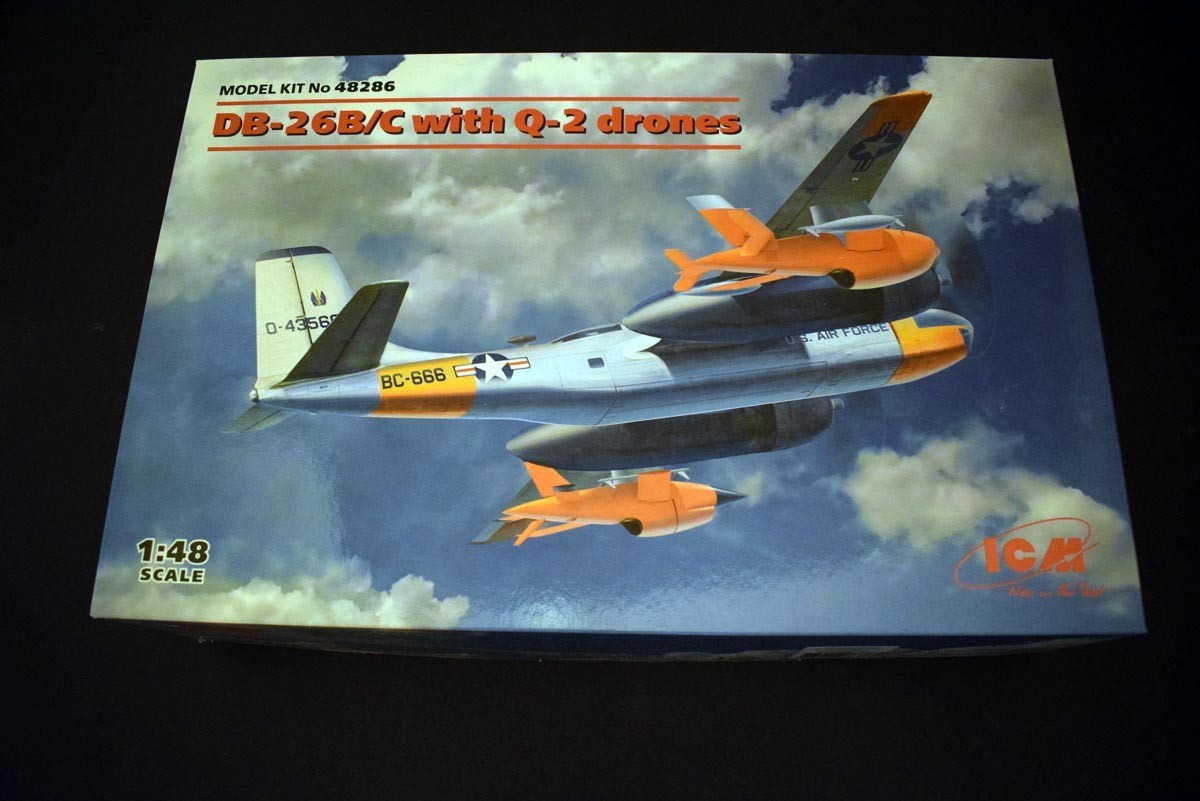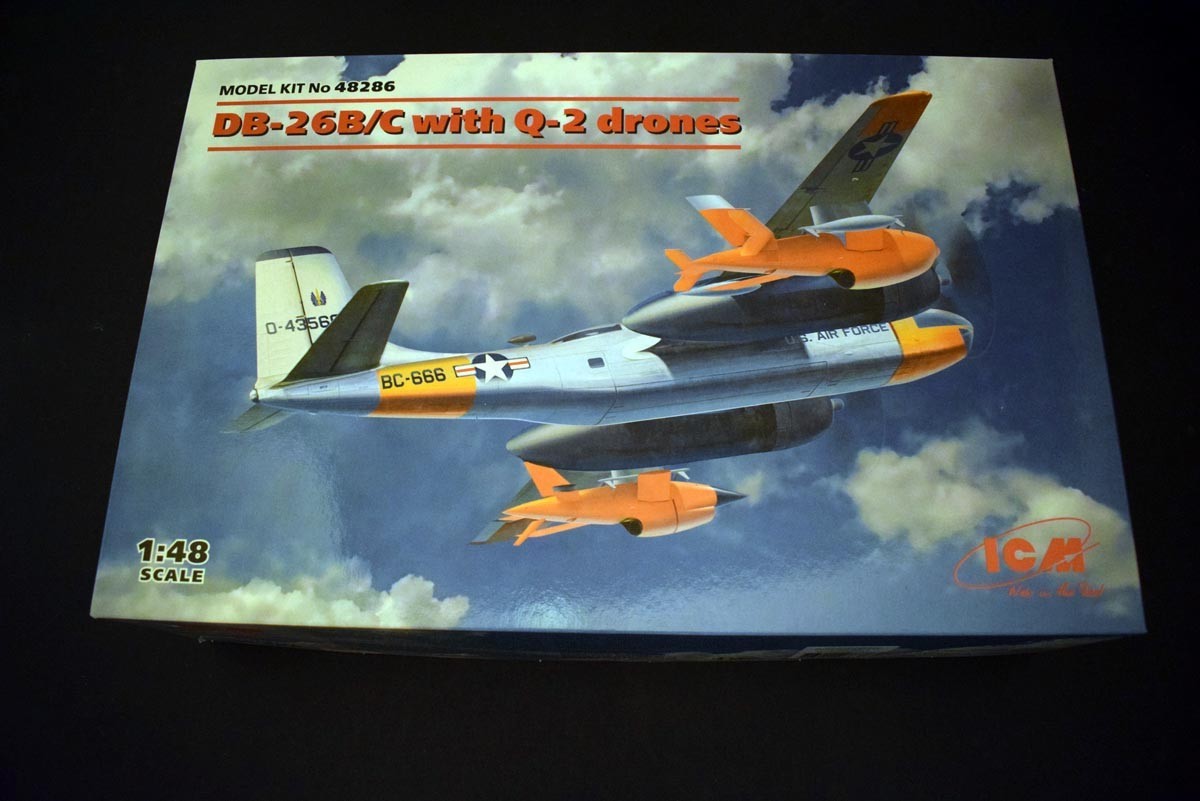
Introduction
The following introduction is taken from ICM:
Several aircraft of the Invader family have been converted into drone carriers. Absolutely all weapons were removed from the planes, and unmanned target aircraft were suspended on pylons under the wing. Such machines were used in the training of fighter pilots, and drones acted as targets imitating real air targets. After completing the task, the drones landed with a parachute and were subsequently reused. The Air Force, the Army and the Navy had their own drones, although they often used the same model with minor modifications.
Review
This offering from ICM is provided in a flip top cardboard tray, with a separate card lid showing the artwork. All of the model sprues are provided in a single re-sealable plastic bag, which also contains two further bags containing the clear elements. Due to placing all of the sprues in a single bag, a number of the frets are slightly bowed, however, this has not obviously caused an issue with the moulding themselves. But there is the potential for this to have occurred. The instruction booklet is loose inside the box, and protects no less than 3 decal sheets.
Starting with a look at the interior of the fuselage, you are provided with a lot of interior detail which will make the view through the glazed areas pleasing. Decals are provided for flight controls, but I do have some concerns about the accuracy of the interior layout due to the number of changes that took place over the career of these aircraft. There are some holes that need to be drilled in some aspects of the fuselage, which while indicated in the instructions - No drill size is indicated to be used. When it comes to closing up the two halves of the fuselage, due to the number of different aircraft that ICM has covered there are large panels that have to be added to various areas, and I have found the fit of some of these panels, to be problematic to say the least. I do like that ICM has indicated a nose weight will be required to prevent the model being a tail sitter.
The flight surfaces of this model are well replicated, as are flight controls, and I am further pleased to see that the holes that need to be drilled in the wing, cover both size and location. The flight controls themselves can be set in two orientations and when mated to the fuselage have two braces to support the wing in the correct orientation on both sides. The engine nacelles themselves are assembled and added to the wings after the wings are added to the fuselage, which will make getting the wings correctly attached easier due to the reduced weight. ICM has indicated that depending on the option of the finish you decide to use, weight will need to be added to the engine nacelles, rather than the nose of the fuselage.
A nice representation of the twin banks of cylinders for the engines are included, and you could leave the cones off on one or either side to display the engine. The undercarriage of the model, has been nicely replicated with the diamond pattern on the tyres. However you will need to be careful when aligning the pattern, and any seam will be difficult to tackle. Once the other panels are added to the fuselage, the aircraft itself is finished, and you are provided with two finishing options which are as follows:
Drone Carrier DB-26C 44-35666, USAF, Hollowman AFB, Late 1950s
Drone Carrier DB-26B 44-34652, USAF, Tynedall AFB, Late 1950s
And the instruction booklet also provides plans for making your own masks for the glazed areas of the kit. Two versions of drone are included in this offering, which are BQM-34A (Q-2C) Fire Bee, KDA-1 (Q-2A) Fire Bee.
Conclusion
This offering from ICM makes a nice addition to the line of B26s, due to being a colourful variant and with the drones eye catching. I am not convinced that two different drones would be carried on the aircraft at the same time, but the truth is I don’t care, because I like the look. Building one of these B26’s is not a straight forward task, due to for the most part, the number of large sections of fuselage that need to be added to produce different variants and keep it financially viable. ICM does need to learn, to start adding items such as seat harnesses, as when missing it is obvious in these larger scales, and results in a major negative of what are usually high quality models.
